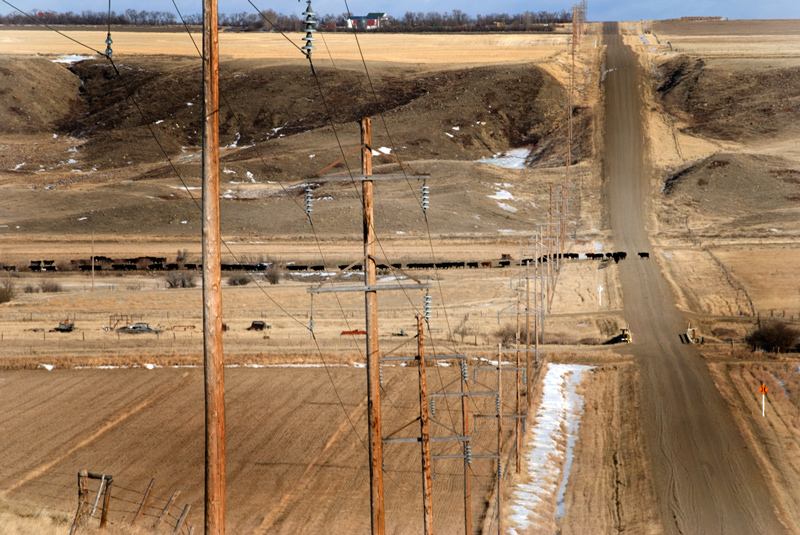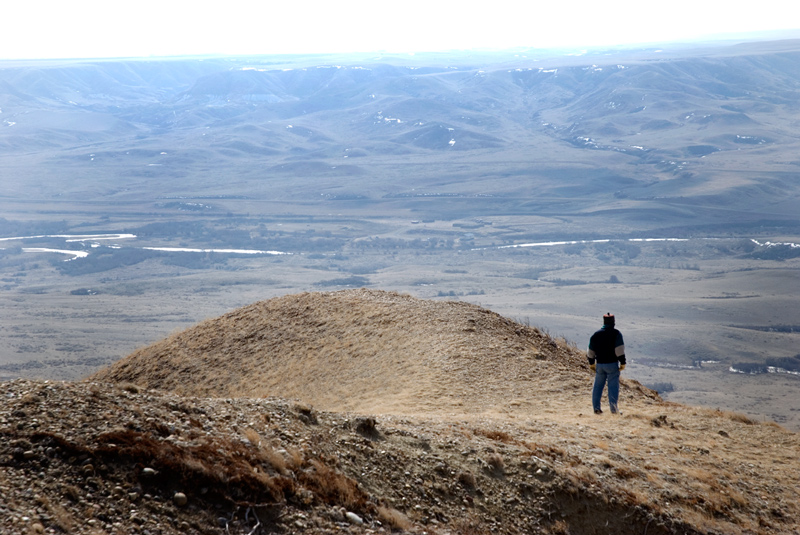|
(p/e) CHIMNEY COULEE Pre-1890 return to previous page Not many have written firsthand accounts of life in the Chimney Coulee or Hunter's Settlement as it was also named or East End, the name given it by the NWMP. But Palliser, Erasmus, Cowie and the NWMP non-commissioned officer, Constable John A. Martin (Turner, 1950), thin and life loving as he was, did leave accounts and those provide the slim history. Cowie (see previous page) mentions his sole 1871-1872 wintering experience along with his impressions of working in such a natural and dangerous preserve. Burley (1992:85): "In contrast to the open plains there was a broad resource base from which winter subsistence could be realized." He suggests that the Coulee could have been occupied as early as 1840, but he says Stegner (1966) makes a stronger argument for the first fifteen families being there in 1868 near the White Mud Creek. Burley also reports that Corky Jones (1953) tells of 60 hivernant families in 1873. It was apparently around this time that the name Hunter's Settlement was used and a chapel existed administered by either the desultory Fr. DeCorby or the freewheeling Fr. Lestanc, maybe both, who knows. Burley reports that usually a trading post was located in the vicinity of the detachment. From 1876 to 1887 the NWMP occupied the post in the coulee, mostly during the summer and particularly to monitor Sitting Bull and the Sioux who camped close to the current site of Eastend in 1879. The post was doubled in size for that purpose. Burley suggests that by 1880 the resources of the coulees were severely depleted and probably provided little reason for any hivernant families to reside there, even though not long after, settlers moved into the area in the 1890s and began to set up huge ranches and in some cases farms. Much of this settlement was wiped out in 1906/07 by deep snows that killed most of the cattle. Frenchman River Valley, The Eastend PFRA Irrigation Project and the Butala or Morvik cattle being moved, 8km S of Chimney Coulee
images and text © D. Wall (except where otherwise noted)
|
Erasmus, P. Buffalo Days and Nights:
as told to Henry Thompson.
Calgary: Glenbow-Alberta Institute, 1976. Jones, C. History of Reminiscences of East
End and District, Saskatchewan. Golden Jubilee Anniversary, 1953.
Stegner, Wallace, Wolf Willow: a history, a
story and a memory of the last frontier. NY: Viking, 1966.
Turner, J.P., The Northwest Mounted Police.
Ottawa: The King's Printer, 2 vols., 1950.
Jones Peak, 30 km SW of Chimney Coulee
images and text © D. Wall (except where otherwise noted)
"Where the skies were not cloudy or grey" You can easily
imagine Peter Erasmus' (1976) view as he accompanied, he says, Palliser through
a
landscape like this not far to the west of the Cypress Hills in 1858.
(Others say he was probably on a trip with Brisco and Mitchell
in 1859 - see footnotes on Chapter 4). Either way, on the Canadian side of
the international border as they travelled to Fort Benton, "(w)e travelled
through herds of buffalo nearly all the way. Deep ruts scored the prairie grass
where the buffalo had travelled for centuries in their migrations ... . It is
not surprising that few people in that day believed that they would ever be all
killed. "...These vast herds were the greatest I had ever witnessed. ... we had been in
the extreme northern edges of the great herds that grazed along our borders ...
. " ...
Both the captain (Palliser) and Dr. Hector believed that a policy of buffalo
extermination had been adopted as the quickest way to break down Indian
resistance to American authority." (p. 71)
Erasmus' first
buffalo hunt happened near Edmonton in about 1856 and he describes it this way
(p.30-32) :
"Sheltered by the ravine, we would approach the herd as near as we could get;
then, at a given signal, every man for himself, we would race the horses
straight for the buffalo.
"I could hear
the buffalo as they made a kind of low grunting sound. ... we climbed to the
level above. A single buffalo feeding close to the rim whirled and raced towards
the others. The moment my horse caught sight of the lone animal he took a
tremendous leap ahead ... (t)he lazy brute in a twinkling turned into a fiery
meteor.
"... my horse was keeping pace with one particular animal at a distance of about
four yards. I took aim and fired (a muzzleloader). For a minute I thought I had
missed as the beast kept on running, but suddenly it turned head over heels. ...
My companions were swallowed up in a cloud of dust stirred up by the herd. "It wasn't long before (my companions) had the animal skinned
and quartered, ready for the pack horses ..."
With thanks for residence and
research assistance to Eastend Arts Council and Stegner House
|

